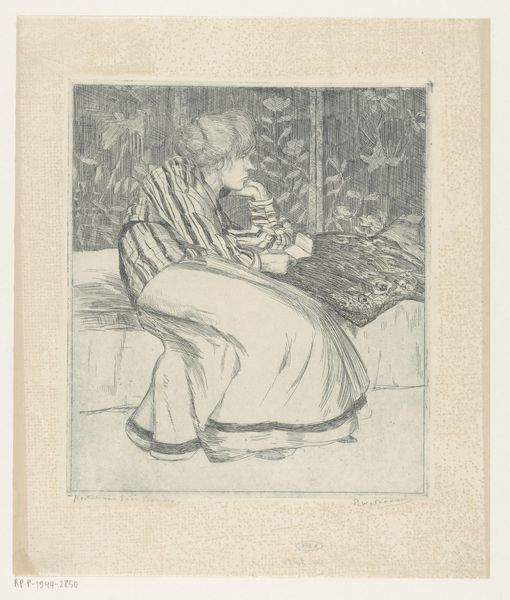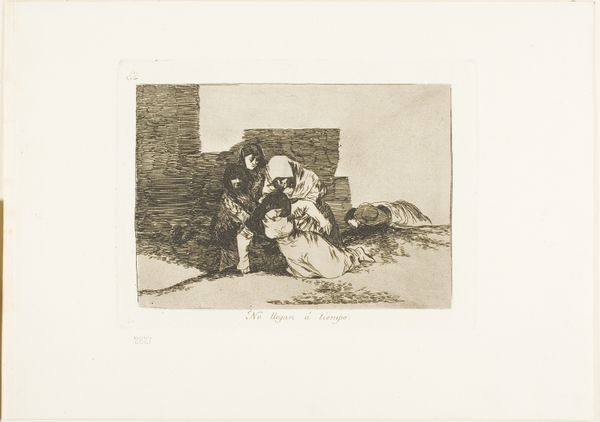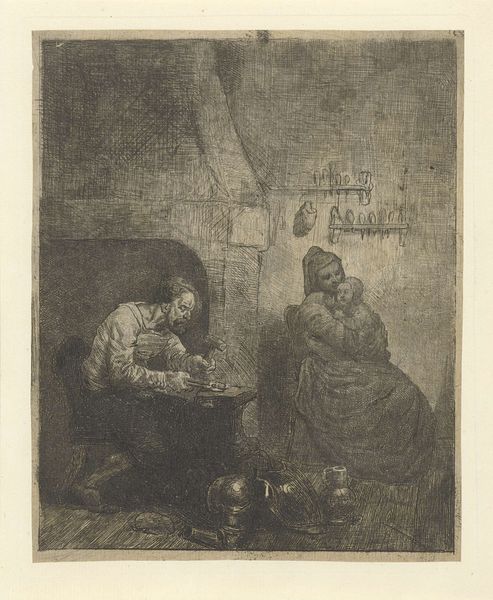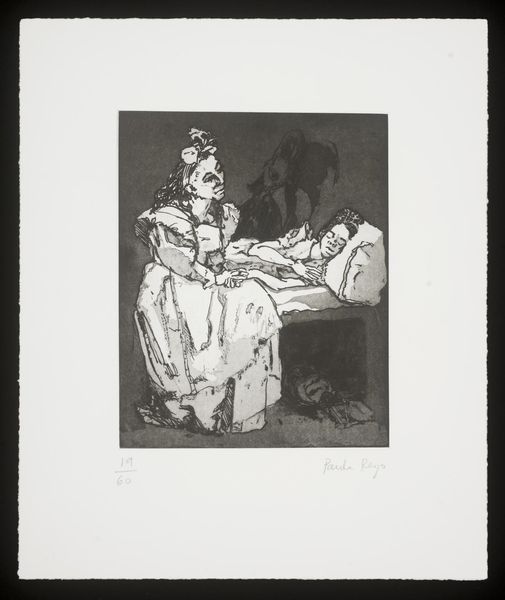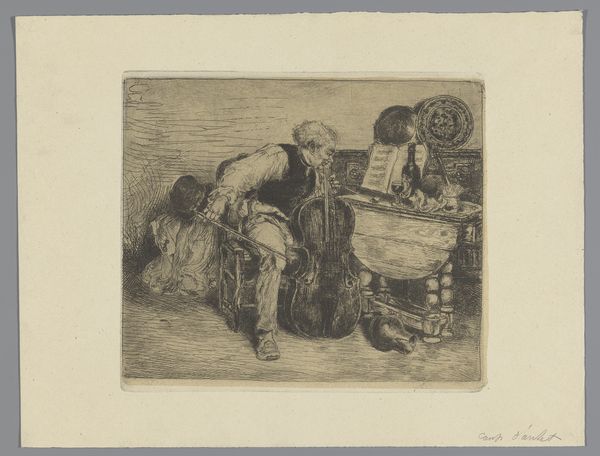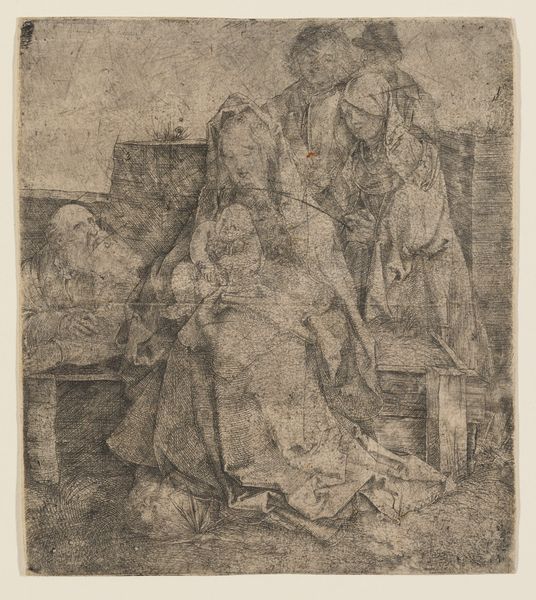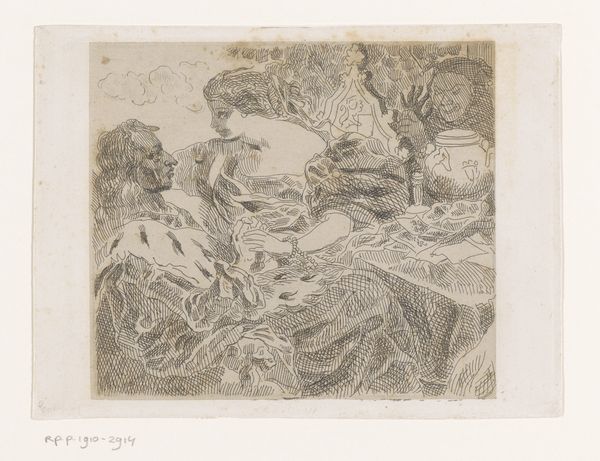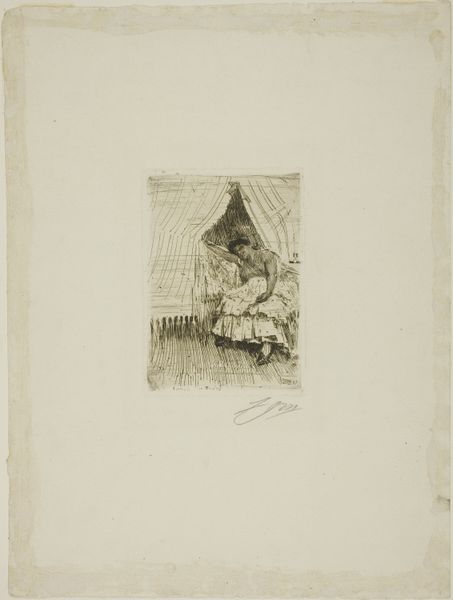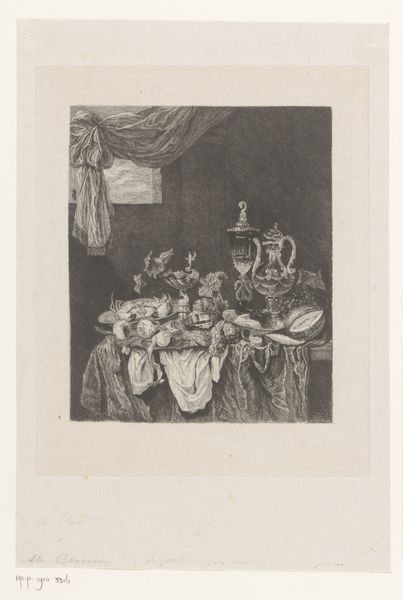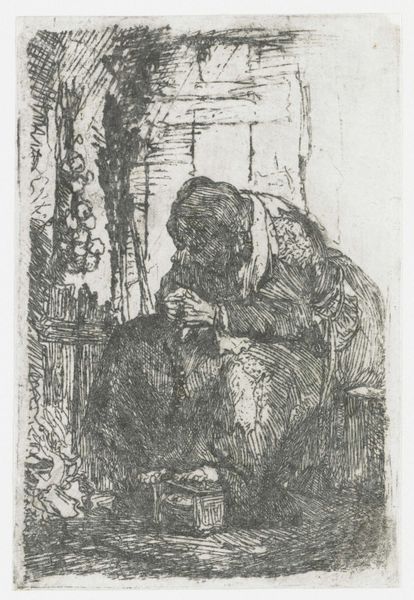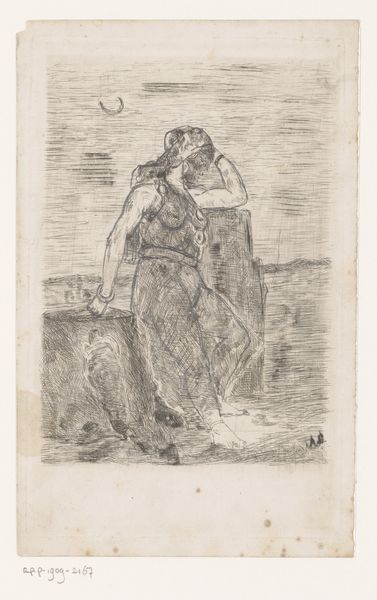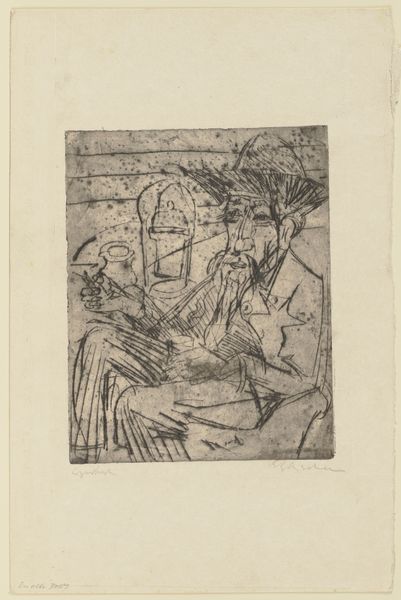
Dimensions: 216 × 211 mm (image); 225 × 219 mm (plate); 310 × 280 mm (sheet)
Copyright: Public Domain
Curator: Emil Orlik's etching, "Three Women," created in 1905, gives us such an intimate look at a moment frozen in time. The printmaking medium immediately interests me, how multiples make the art potentially available to a wider audience than a unique drawing. Editor: It has such a gentle, almost dreamlike quality, doesn't it? They're huddled together, seemingly in conversation or quiet observation, bathed in this hazy light. There's something so calming about the scene; you could almost hear whispers carried on the wind. Curator: The softness certainly contrasts with the labor involved in etching. The marks on the plate and paper require strenuous labor, a collaboration between the artist's vision, the materials they chose, and the cultural background shaping its production. How might ideas about labor and class inform the style chosen and composition details? Editor: That is interesting to think about. You know, my initial impression was this feels nostalgic for something bygone—the headscarves, the dresses...a specific way of life we may never really return to, or maybe never existed at all except in memory. Even their skirts look homemade and suggest a life apart from factories. Does the composition subtly critique industrialisation? Curator: Perhaps. The textile production in that era was complex and very gendered, deeply involved with capitalist mechanisms...I think that by rendering this work as an etching Orlik comments on what we think of "art" when textiles and printed images were not viewed as such at the time. Editor: Ah, the idea of raising the ordinary up through art. I get that. You also just have to wonder what they're talking about. What were their worries, dreams, frustrations, you know? Did they giggle sometimes at the strangeness of men? Or swap favorite herbal remedies for stubborn coughs. Curator: Ha! Considering this piece hangs at The Art Institute of Chicago, in a city undergoing great growth at that moment, perhaps they are commenting on the impact this progress is having on their environment. I guess we will never truly know what stories they told each other. Editor: Never. Though, this conversation gave me some fun ideas about it. What an absolutely gorgeous peek at the turn of the century—made even more potent considering the means of production.
Comments
No comments
Be the first to comment and join the conversation on the ultimate creative platform.
